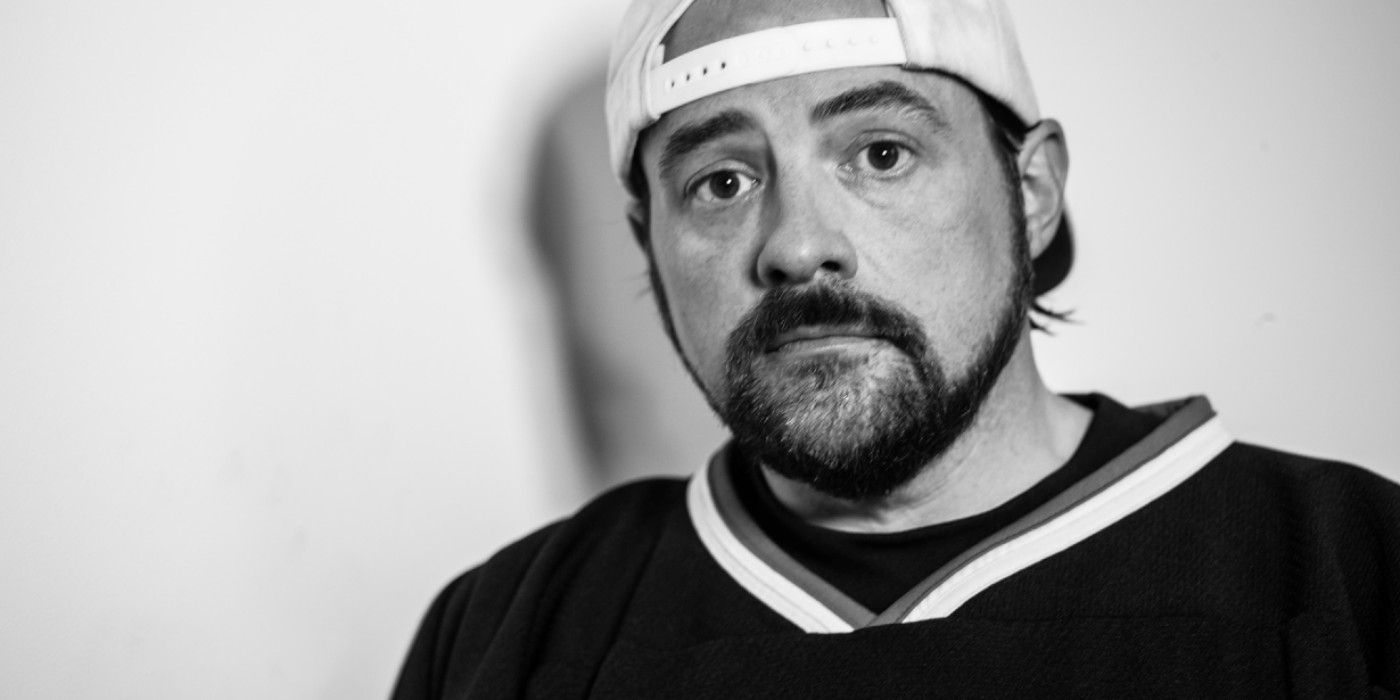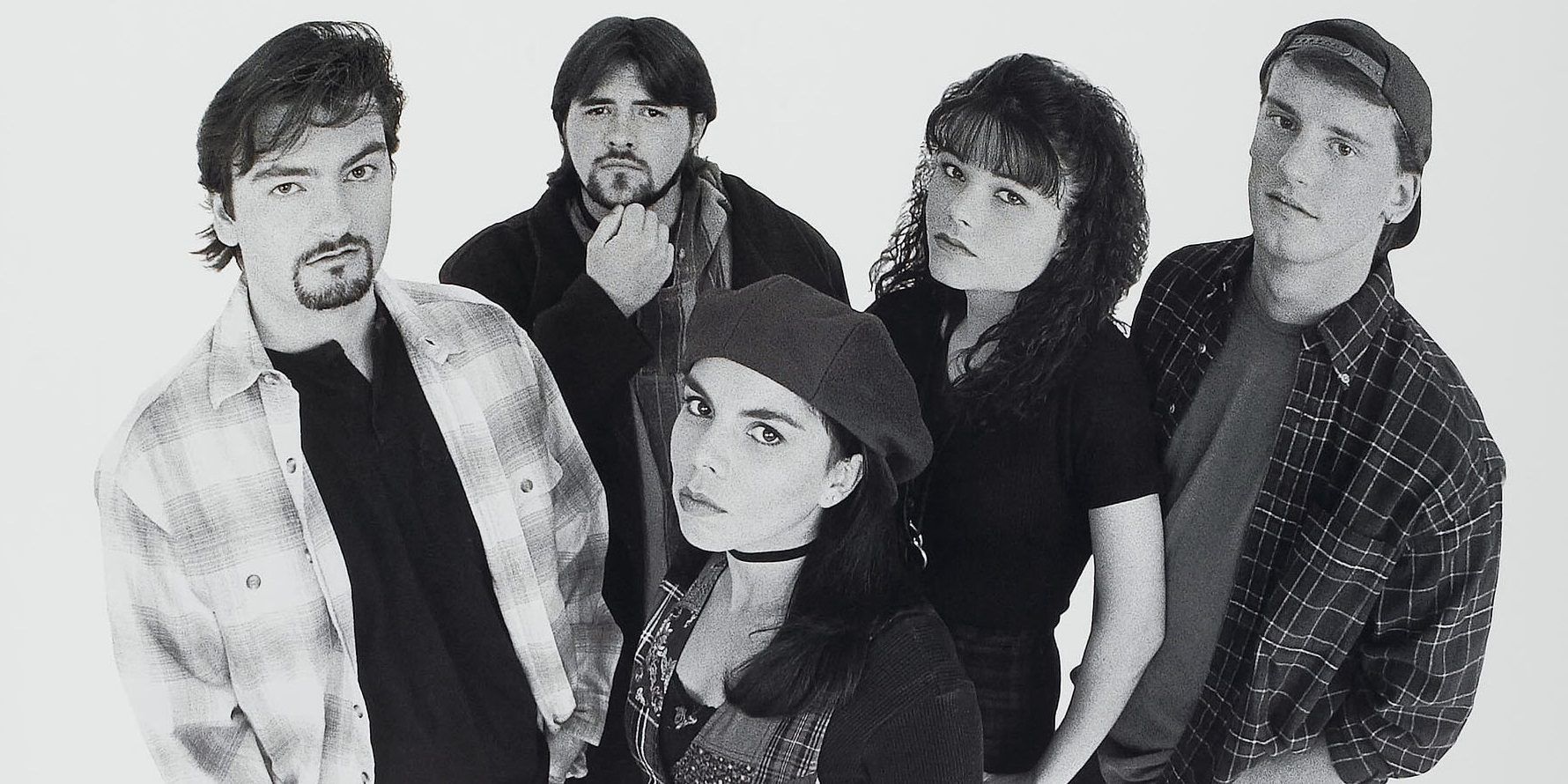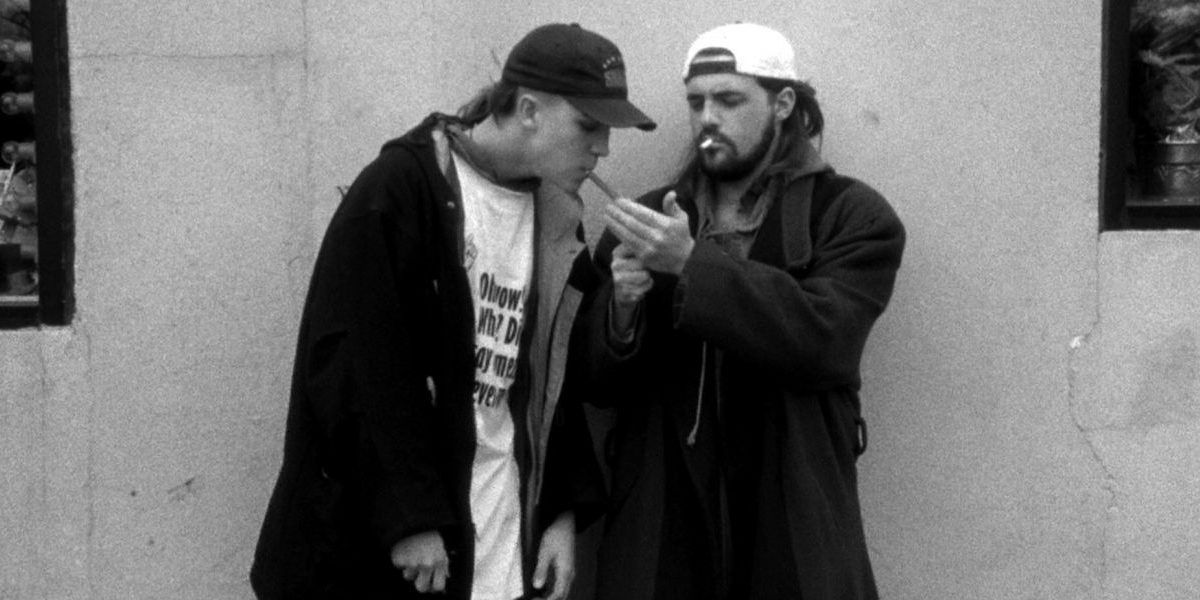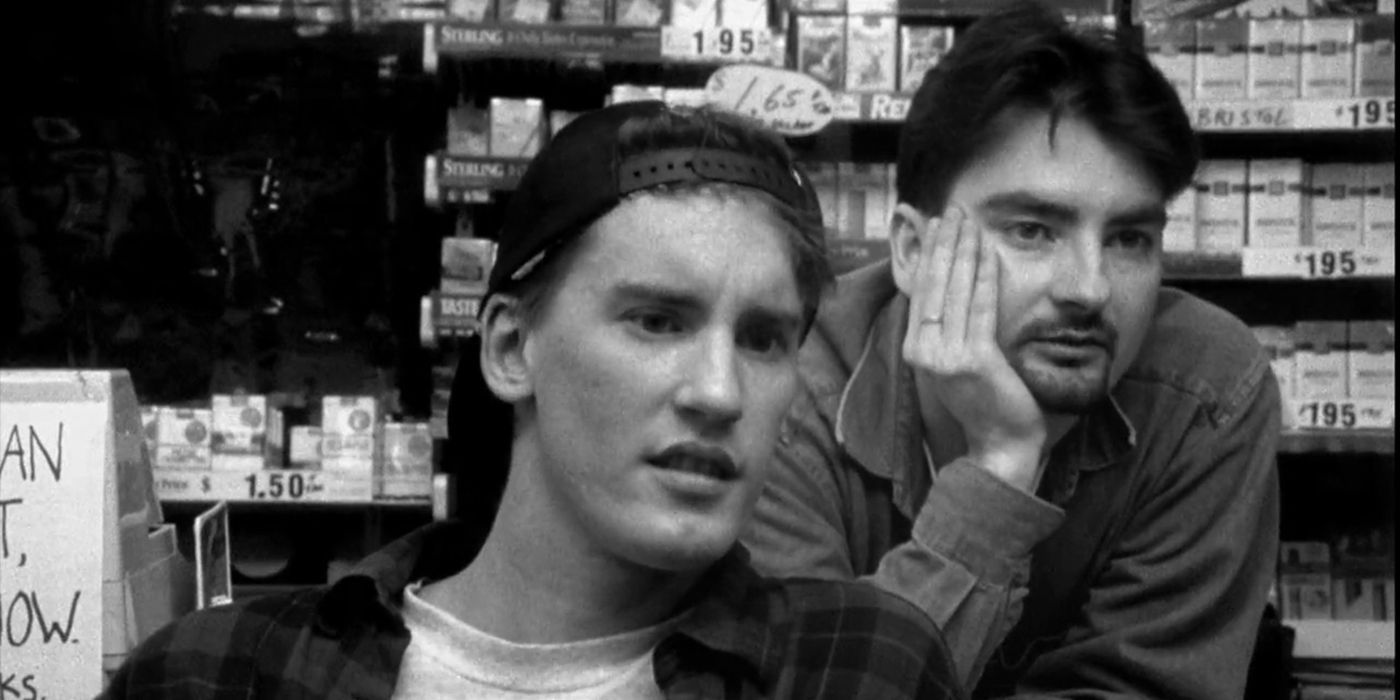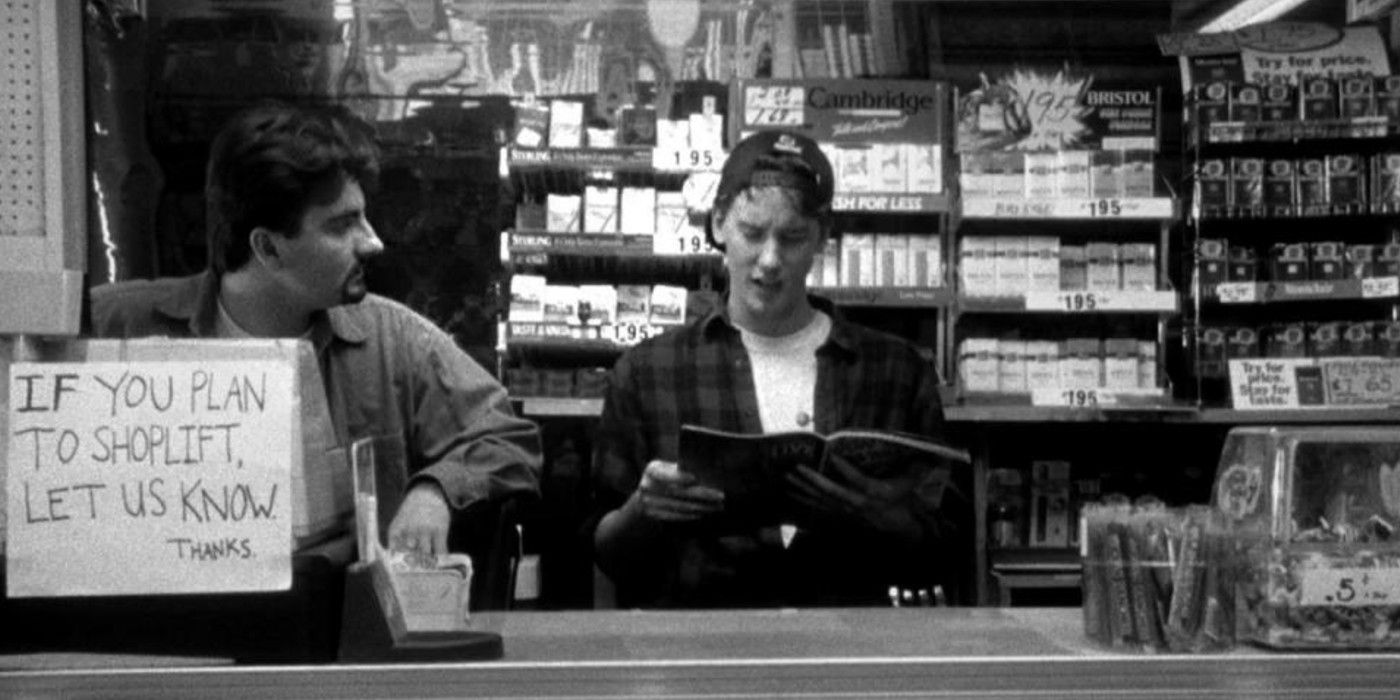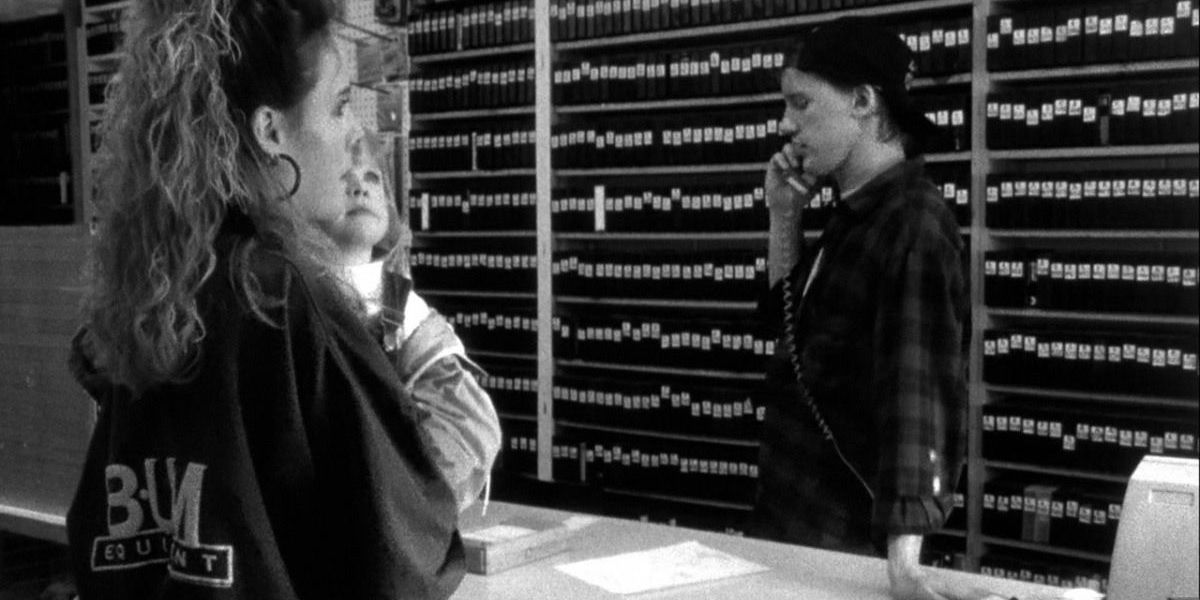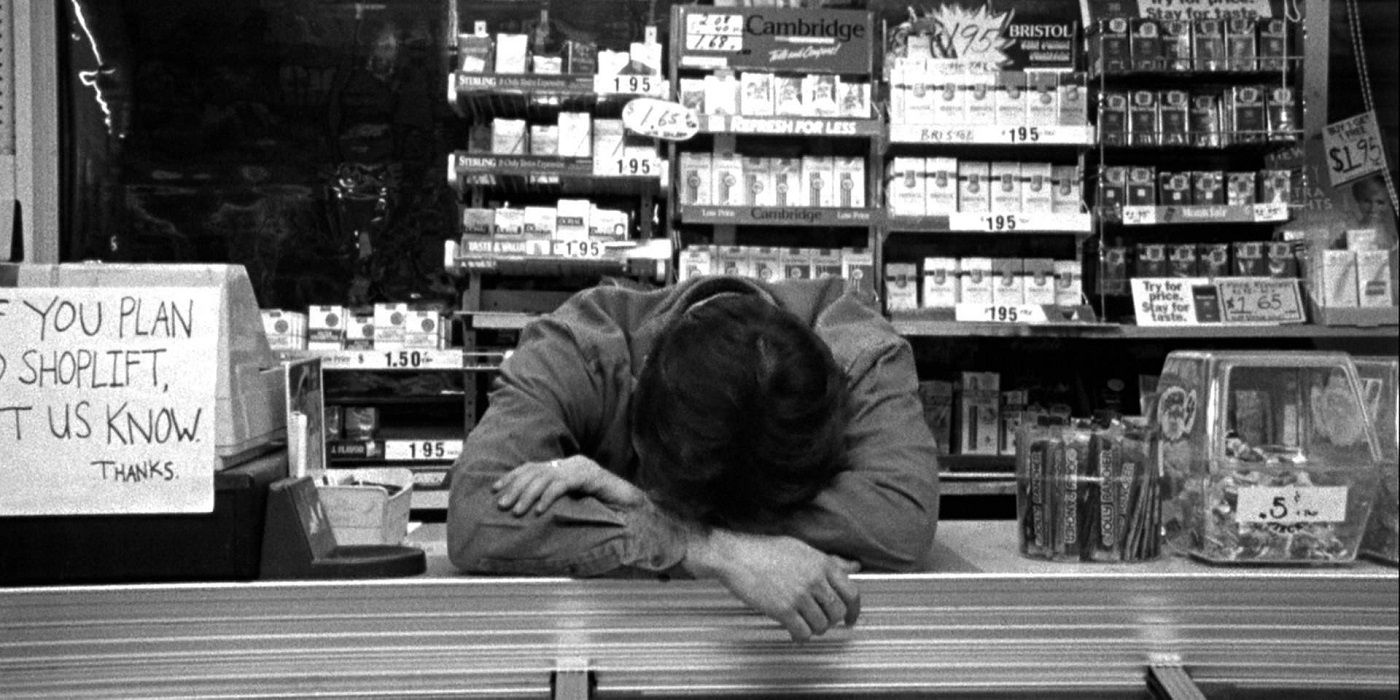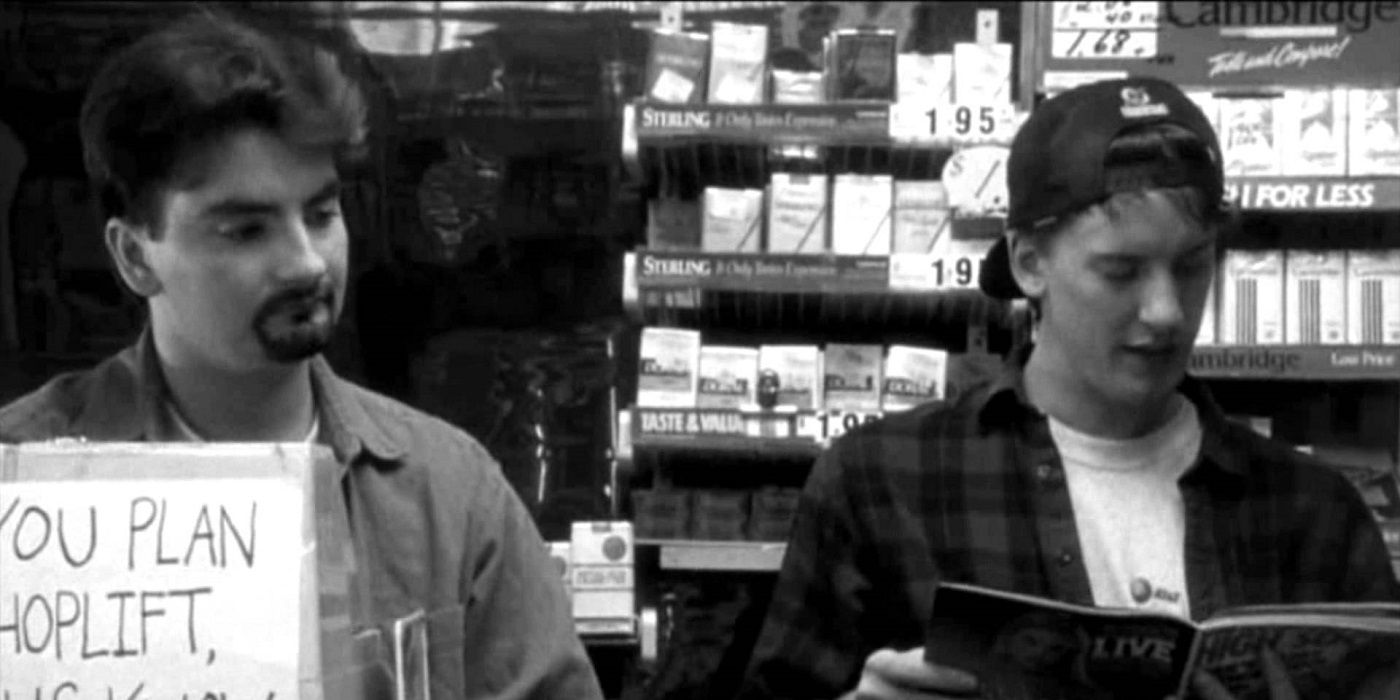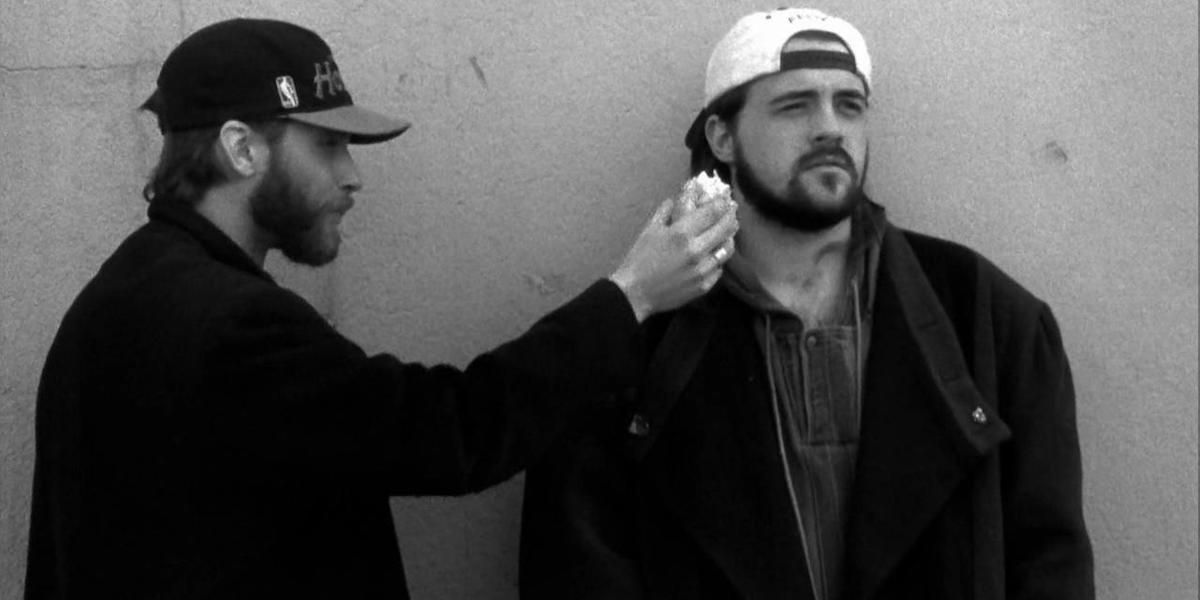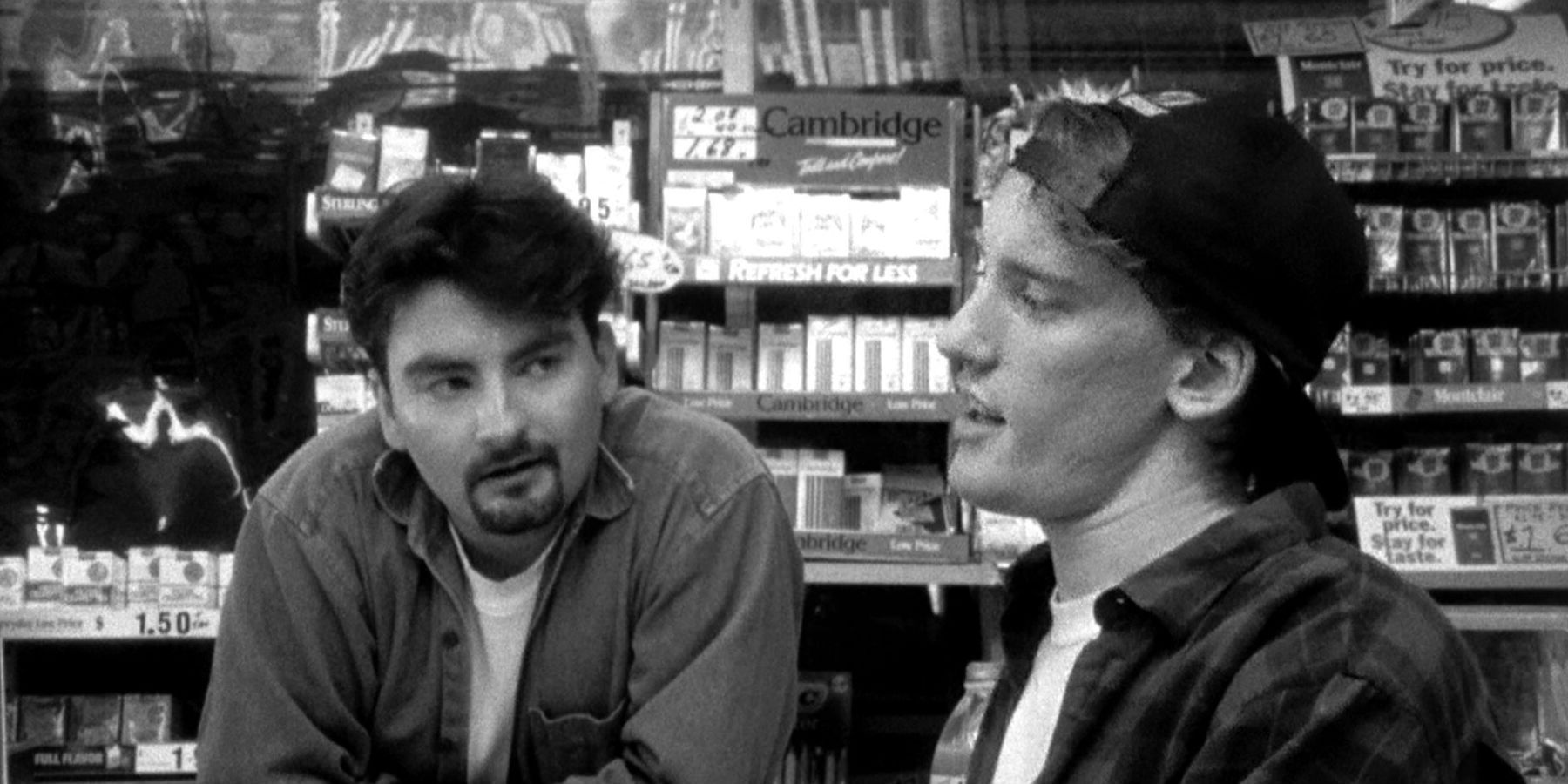Kevin Smith’s Clerks is one of the greatest independent directorial debuts of all time. It has a distinctive New Jersian feel; the black-and-white film stock gives the movie a raw, minimalist focus on character; and most importantly, it’s instantly memorable.
As great as the movie itself is – a timeless comedy classic – the story behind how Smith and his ragtag production team made it is arguably even more interesting (so much so that it was actually dramatized in a movie called Shooting Clerks that got Smith’s own stamp of approval). So, here are 10 Crazy Behind-The-Scenes Stories From Kevin Smith’s Clerks.
Kevin Smith maxed out ten credit cards to raise the budget
In order to raise the budget to shoot Clerks – which was a shoestring figure at around $27,000 – Kevin Smith maxed out ten credit cards and pawned his entire comic book collection.
On the official Clerks website, where this is outlined, there’s a warning from Smith that reads, “We don’t really recommend this method of funding a film as if your film does not pan out, you will be put in serious financial debt for much of your life.”
Fortunately for Smith, it did pan out and he made enough to kickstart his Hollywood career and buy back all his comic books.
Miramax hired one of O.J. Simpson’s lawyers to contest the NC-17 rating
When Clerks first premiered at Sundance and it was picked up for a wide release by Miramax, the MPAA assigned it a dreaded NC-17 rating for its excessive use of offensive language. This is the most restrictive rating assigned by the organization and it’s considered to be box office poison because very few NC-17 movies become major hits.
So, the studio hired Alan Dershowitz, one of the lawyers who famously worked on O.J. Simpson’s “Dream Team” defense, to contest the rating. Dershowitz managed to get the MPAA to give Clerks an R rating without having to make a single cut.
Jay and Silent Bob’s dynamic was established by accident
The dynamic shared by Kevin Smith’s iconic duo Jay and Silent Bob is that Jay will spend a whole movie spouting expletive-laden nonsense, while Silent Bob will say nothing, and then at the end, Silent Bob will come out with a lengthy monologue with something really profound to say that inspires change in the protagonist.
It’s a tried and tested formula that ties the View Askewniverse together. However, this was established by accident in Clerks. Silent Bob’s monologue was meant for Jay, but Jason Mewes had a tough time delivering it and Smith decided to just do it himself. Thus, Jay and Silent Bob’s function in these movies was born.
The original ending was much darker
Dante repeatedly says the line “I’m not even supposed to be here today!” throughout the movie as a setup for the original ending, which was much darker. The initial cut had the movie ending with an armed robbery at the Quick Stop where Dante would’ve been shot and killed. This would pay off the joke that it wasn’t his shift with the revelation that the shift change ended his life.
Miramax is infamous for enforcing cuts on movies without consulting their directors, but they were actually willing to keep this ending if Kevin Smith really wanted it, even though they were wary of it and hoping he’d decide to change it. In the end, of course, he did, and the movie is more tonally consistent as a result.
Kevin Smith loosely based the script on The Divine Comedy
Modernized adaptations of classical literature can result in delightfully quirky movies. For example, O Brother, Where Art Thou? is based on Homer’s Odyssey, My Fair Lady is based on Pygmalion, and 10 Things I Hate About You is based on Shakespeare’s The Taming of the Shrew.
Kevin Smith’s script for Clerks is a loose adaptation of The Divine Comedy – also known as Dante’s Inferno, which is where the lead character gets his name from. The story is a trial by fire for Dante, and the nine breaks in the film are there to represent the nine rings of Hell from Dante Alighieri’s groundbreaking narrative poem.
Randal didn’t list the explicit titles in front of the little girl
One of the funniest scenes in Clerks sees Randal speaking to the video distributor on the phone, asking for Happy Scrappy Hero Pup for a woman and her young daughter, but he first rattles off a list of porno titles, leaving the woman and her daughter horrified.
Actor Jeff Anderson refused to use such horrendously explicit language in front of a child, so he shot the naming of the list separately to their reaction shots. However, the mother’s reaction shots were achieved by reading the list back to her – it’s just that Anderson wasn’t the one who read it to her off-screen.
It’s only in black-and-white because black-and-white film was cheaper
Even since the color film was invented, a handful of movies have still been made in black-and-white. It doesn’t have much mainstream appeal since moviegoers prefer modern concepts to old-fashioned ones, but there is the odd black-and-white movie that still gets made. If it does, the director usually has an artistic reason for doing so.
The Artist was a throwback to old silent movies; Martin Scorsese was inspired to shoot Raging Bull in black-and-white based on the color of boxing gloves. However, the reason why Kevin Smith shot Clerks in black-and-white is a lot simpler than that. He wanted to keep production costs as low as possible, and the black-and-white film was cheaper than color.
A Miramax executive laughed so hard at the script that he had to stop reading
An executive at Miramax was reading the script for Clerks (as part of the process to decide whether or not to pick it up for distribution), and when he came to the scene where Dante tells a customer, “My girlfriend sucked 37 d**ks!” and the customer asks, “In a row?” he apparently laughed so hard that he had to stop reading the script.
It was at this point that he realized he’d come across something pretty special and started taking the script up the chain to the bosses – who, unfortunately for the purposes of the story, were Harvey and Bob Weinstein – to get it greenlit for distribution.
The first draft of the script was 168 pages long
Kevin Smith is known for being pretty precious about his scripts. If the actors even go one-word off-script, he’ll stop the take and make them correct it. His films are also very dialogue-driven, with long, talky scenes.
As it turns out, Clerks could’ve had even longer, even talkier scenes. The first draft of the script was 168 pages long. The general rule in screenwriting is that one page of script is equal to one minute of screen time, so this version would’ve been almost three hours long (give or take). Needless to say, the director needed to cut it down drastically before shooting.
Kevin Smith worked at the Quick Stop during production
The Quick Stop is a real convenience store in New Jersey, and not only that, Kevin Smith was working there during production. The owner of the store let him film in there on nights, so he basically tortured himself with sleep deprivation on a rigorous, cost-cutting shooting schedule.
Clerks shot for 21 straight nights (this is why there’s a running gag that the shutter is stuck closed – the filmmakers had to cover up the fact that it was dark out) and Smith had to work there during the day. He’d work from 6 am to 11 pm every day, then shoot until 4 am and attempt to get an hour or two of sleep before starting all over again.


